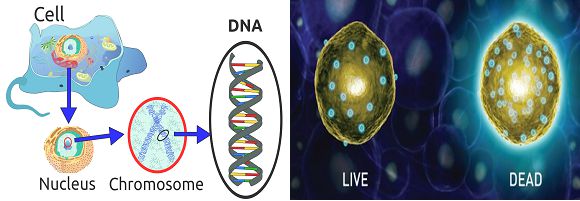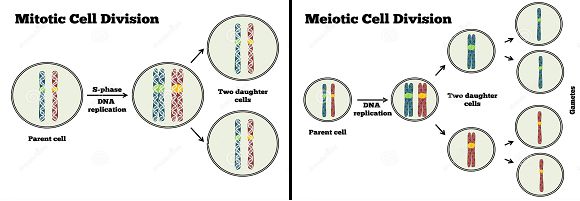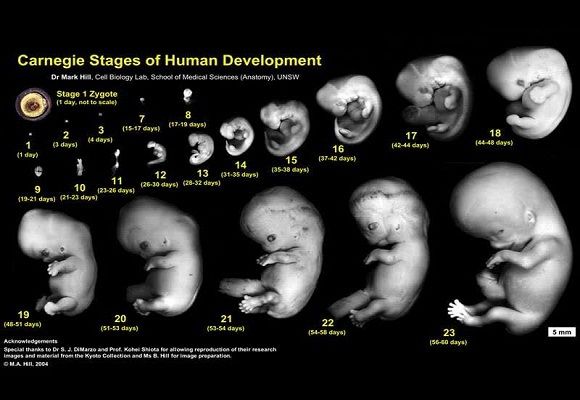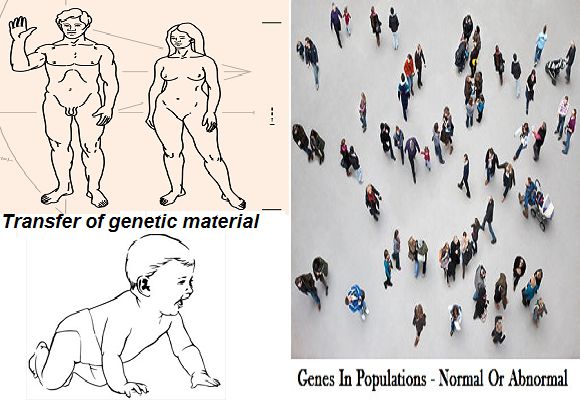Genetics of Life and Death:
Life and death are purely genetic mechanisms of cell phenomena and not the way we ascribe culturally. The ageing is related to the biological function of the cell and as cell gets old and matured with time then its activity and functioning gets reduced. The death occurs when cell cessation takes place. However, we ascribe life and death to the sins and their retribution. The biology of cell functioning with the age has three stages, young, middle and old that equates to childhood, adulthood and senility (old age).

Somatic (Bodily) and Reproductive Cell Mechanism:
Life is continued through reproduction of the germ cell. There are two types of cell division, like, mitosis and meiosis. The mitosis is a process of cell division that occurs in all bodily cells as with each division the cell gets into two independent cells with diploid number (2N) of chromosomal set(46 chromosomes). 2N chromosomal set means 1N (23 chromosomes) from father and the other 1N (23 chromosomes) from mother.

In meiosis, the cell diploid in nature divides into two haploid cells, with half number of chromosomes (1N). This process is called reduction division. The meiotic division occurs only in reproductive cells of all bisexual organisms including man. The male injects its reproductive haploid sperm cells in to the female in billions through semen sac and the female has the capability of producing only one haploid fertile egg during one menstrual cycle of 28 days. The egg of the female gets fertilized by one male sperm out of billions to form a zygote (fertilized diploid cell).
Zygotic divisions culminate to baby formation:
The zygote develops thereafter through mitotic process of divisions and turn into fetus and thereafter fully grown offspring. In genetic and evolutionary terms the newly born baby is said to be an effective one, only if it could reach to the maturity age of reproduction and get transferred its genetic material to the next generation. Otherwise, it ends up with genetic death. Further, it is also the parental duty to see their offspring reach to the maturity (reproductive age) and thereafter to participate in the evolutionary dynamics of reproduction.

Life as a continued process of evolution:
Thus, lives are a continued process of shuffling genetic material of bisexuals of the species from one generation to the other and thus participate in evolutionary mechanisms of life. If there is no shuffling of genetic material between a couple due to cause of infertility, then it is said to be the genetic death of the couple. Even if a person, he or she dies before marriage (prescribed mating age of culture) then also such a death is said to be genetic death.

Biology and Culture of Life and Death:
So, that is the difference between life and death through biological and cultural means. Culturally, a lineage means a descendants of people related biologically through paternal. Same is with the Clan (gotra), the descendants of patriarchal parallel cousins. Thus, lineages and clans or moieties are cultural units but are referred as biological units in terms of related genetic material. Several such cultural units form an endogamous population termed biologically, a breeding population. Several such endogamous breeding populations constitute an ethnic population. The ethnicity of a population consist a gene pool and several such gene pools combined to culminate a species. And in man, it is Homo sapiens. Thus, life and death are linked to transfer of the genetic material, DNA-the life coil, from generation to generation and participate in evolutionary processes of life. Further, Life holds nothing but a pass through of genetic material biologically and experience with mental energy culturally.